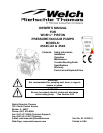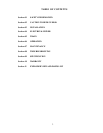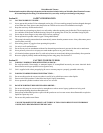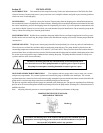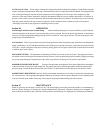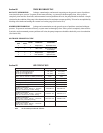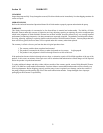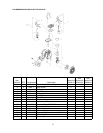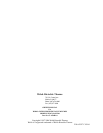5.11 The Care of a Trap When using a cold trap the refrigerant should be maintained at a high level in the flask to keep the
trap at a uniformly low temperature. If the trap is rewarmed it may allow re-evaporation of the condensate. The refrigerant add
tube on the liquid nitrogen trap should not be obstructed as the refrigerant boil-off can pro- duce dangerously high
pressures. If the trap becomes saturated it should be disconnected from the system, drained, and cleaned. An increase in
pressure in the vacuum system will normally indicate that the trap has become saturated. To clean the trap, remove the trap
from the system and allow the trap to warm up and rinse off the condensate with a suitable solvent in a fume hood.
Thoroughly clean and dry the trap before reinstalling into the system.
Section 06 OPERATION
6.10 Starting A Welch Pressure/Vacuum Pump Before attaching the pump to a system, familiarize yourself with the
function and action of the pressure/vacuum pump that you have acquired. Review the power requirements as described in
Section l-6. Welch recommends running the pump for a few minutes to warm it up, before use. The warm-up improves the
pumps ability to handle humid air.
6.11Cleanliness Take every precaution to prevent foreign particulates from entering the pump. Particulates will damage the
pump’s performance. If you find that particulates come off the process during evacuation, a particulate trap in the foreline
will work. A simple, inexpensive trap may be made by placing glass wool in a glass or plastic tube. Screens must be inserted
to hold the glass wool in place.
6.20 LEAK DETECTION The importance of eliminating all leaks in a vacuum system is obvious. The pump must remove
this added volume of leaked gas to maintain the desired vacuum. Leaks for these pump can be located by slightly pressuring
the system and painting the suspected area with a thick soap solution. Escaping air will produce soap bubbles.
6.30 OPERATING PRESSURE RANGE Pressure/Vacuum pumps are designed to be run from slightly below atmospheric
to their maximum vacuum level on the intake side. The pumps also may be run from atmospheric to their maximum rated
pressure rating. Consult the Specification Table (See Section VI, Specifications) for the ratings of your specific model.
6.40 SHUTDOWN PROCEDURES After use, Welch recommends the pump be run for about 2 minutes disconnected from
the vacuum process. The air pumped through the mechanism will purge out water vapor or droplets of water condensate that
may have formed on the inside of the pump. This purge of the pump mechanism helps prevent corrosion.
Section 07 MAINTENANCE
Welch dry pressure\vacuum units are 100% oil-free. The pump employs a non-lube piston and cylinder. No maintenance is
necessary for the bearings. All bearings are sealed and permanently lubricated. Lubrication should not be attempted. The
units are built for continuous duty operation with the quietness and durability of a diaphragm, but with piston performance.
7



